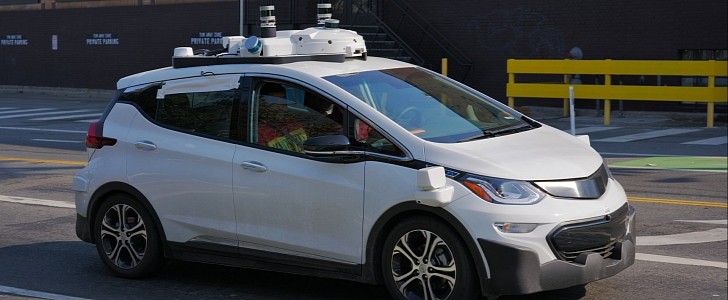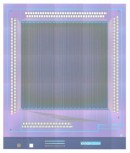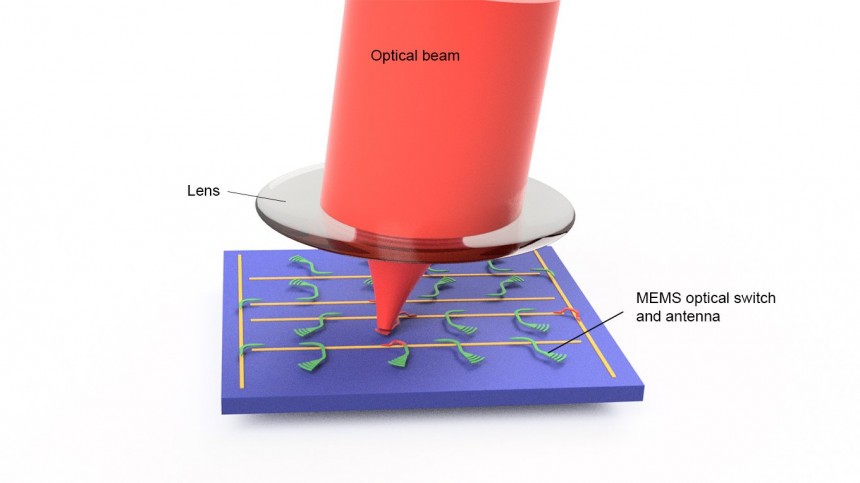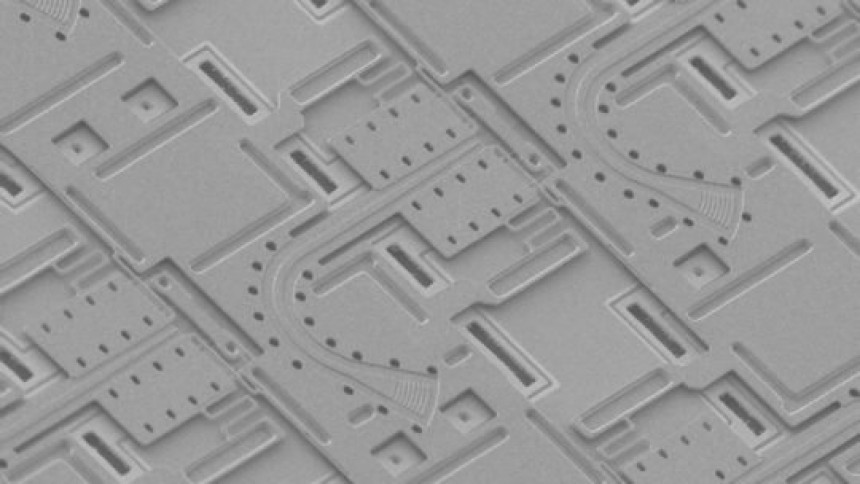LiDAR sensors are usually the spinning cylinders that emit laser rays and analyze the reflections to map the environment for an autonomous vehicle. They are unwieldy mechanical devices that cost thousands of dollars, so we’re not seeing them on commercially available vehicles. Things might change after a new high-resolution LiDAR chip was developed at the University of California in Berkeley.
The first autonomous vehicles we’ve heard of had huge sensors arrays on their roofs, with the biggest of them being the LiDAR sensors. They work pretty much like radar, only with light. But because the laser rays in a LiDAR sensor are not omnidirectional, they needed to cast the light using a spinning device, hence the spinning cylinders we all know. They are quite expensive, which is one reason why we’re not seeing them on normal cars today.
The automotive industry has long moved to a chip-based approach, using cameras and radar systems for collision avoidance systems and autonomous driving tech. It’s a solution that LiDAR sensors are also going to adopt, and we've now learned of a new type of high-resolution LiDAR chip developed at the University of California, Berkeley. The chip, which is based on a focal plane switch array (FPSA), works pretty much like the sensors found in digital cameras. This comprises a semiconductor-based matrix of micrometer-scale antennas that gathers light.
The FPSA solution is not new, but the technology available only allowed for a limited resolution of 512 pixels or less, which is inappropriate for autonomous driving applications. The chip developed at UC Berkeley has a resolution of 16,384 pixels, and the design can be scaled up to megapixel sizes using the same complementary metal-oxide-semiconductor (CMOS) technology used to produce computer processors. This could lead to a new generation of powerful, low-cost 3D sensors that can be used in autonomous vehicles and other devices.
The FPSA chip consists of a matrix of tiny optical transmitters or antennas, and switches that rapidly turn them on and off. This way, it can channel all available laser power through a single antenna at a time. Existing switches are thermo-optic-based, being large and power-hungry, which explains the limited resolution of 512 pixels. The researchers at UC Berkeley replaced them with microelectromechanical system (MEMS) switches that physically move the waveguides from one position to another.
MEMS switches are also old technology, and this is the first time it has been applied to LiDAR. They are much smaller, use far less power, switch faster, and have very low light losses compared to thermo-optic switches. This explains how the new chip is capable of a resolution of 16,384 pixels, which effectively covers a 70-degree field of view. Mounting several sensors into a circular configuration would produce a 360-degree view around the vehicle, just like the spinning cylinder sensors do.
Before the new system gets ready for commercial applications, it needs to increase the resolution and also the range, which is now at around only ten meters (33 feet).
“While the optical antennas are hard to make smaller, the switches are still the largest components, and we think we can make them a lot smaller,” says Ming Wu, professor of electrical engineering and computer sciences and co-director of the Berkeley Sensor and Actuator Center at the University of California. “We are certain we can get to 100 meters and believe we could get to 300 meters with continual improvement.”
Shrinking LiDAR sensors to the size of smartphone cameras will open a new range of applications. Mounting several sensors into a circular configuration would produce a 360-degree view around the vehicle, just like the spinning cylinder sensor do. From vacuum cleaners to autonomous vehicles to biometrics, there’s practically no limit to what this technology will allow.
The automotive industry has long moved to a chip-based approach, using cameras and radar systems for collision avoidance systems and autonomous driving tech. It’s a solution that LiDAR sensors are also going to adopt, and we've now learned of a new type of high-resolution LiDAR chip developed at the University of California, Berkeley. The chip, which is based on a focal plane switch array (FPSA), works pretty much like the sensors found in digital cameras. This comprises a semiconductor-based matrix of micrometer-scale antennas that gathers light.
The FPSA chip consists of a matrix of tiny optical transmitters or antennas, and switches that rapidly turn them on and off. This way, it can channel all available laser power through a single antenna at a time. Existing switches are thermo-optic-based, being large and power-hungry, which explains the limited resolution of 512 pixels. The researchers at UC Berkeley replaced them with microelectromechanical system (MEMS) switches that physically move the waveguides from one position to another.
MEMS switches are also old technology, and this is the first time it has been applied to LiDAR. They are much smaller, use far less power, switch faster, and have very low light losses compared to thermo-optic switches. This explains how the new chip is capable of a resolution of 16,384 pixels, which effectively covers a 70-degree field of view. Mounting several sensors into a circular configuration would produce a 360-degree view around the vehicle, just like the spinning cylinder sensors do.
“While the optical antennas are hard to make smaller, the switches are still the largest components, and we think we can make them a lot smaller,” says Ming Wu, professor of electrical engineering and computer sciences and co-director of the Berkeley Sensor and Actuator Center at the University of California. “We are certain we can get to 100 meters and believe we could get to 300 meters with continual improvement.”
Shrinking LiDAR sensors to the size of smartphone cameras will open a new range of applications. Mounting several sensors into a circular configuration would produce a 360-degree view around the vehicle, just like the spinning cylinder sensor do. From vacuum cleaners to autonomous vehicles to biometrics, there’s practically no limit to what this technology will allow.








